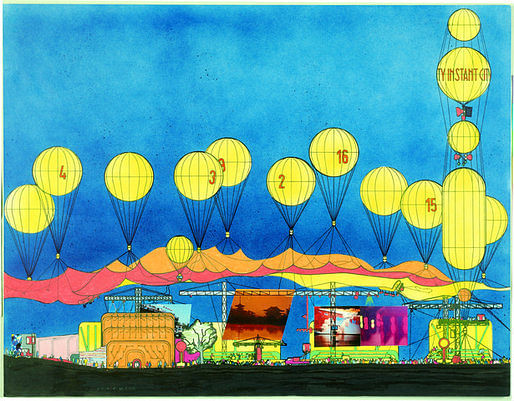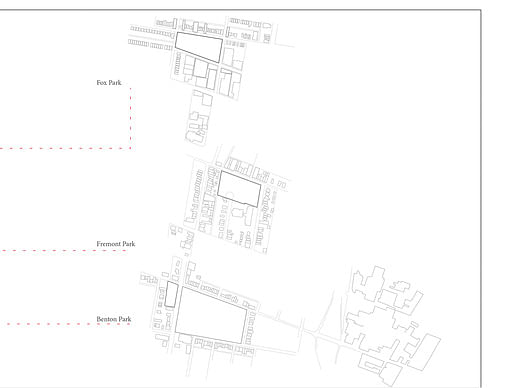
The last post had two different points in time at once.
It was also missing the presentation from 09/18/12.






I still insisted on proposing questions and ideas about a temporal public existence. In part, I am pulling from my experience in the suburbs, where I felt that no public setting available would allow me to be truly expressive. Feeling placed in a box takes a while to fade I guess.
The other part of me, again, goes back to the Occupy movement and the Arab Spring. No architectural proposals tried to grapple with the events which occurred despite many unique living experiences and public expressions unfolding where people gathered. I felt that the Archigram proposals from the 1960's had at least put some thought into how a rapid gathering of people might be addressed.
Historically, Archigram's ideas were developing at turbulent and protest filled time across the globe. While similar to the protests of the 2011-2012 period, the motives came from a very different direction. But knowing that, we cannot look at the joyfully playful Archigram proposals as innocent ideas devoid of a politically driven impetus.
At the top part where we see the table, House of the Future and Piaza San Marco we see ideas beginning to think about a kind of "public stage" which provides the audience for public expression.
All that said, the critique didn't go the way I wanted it to. Given the very real constraints and need of a large scale proposal in Degree Project the following semester, it was recommended that I move away from thinking about temporary pods which could invade a public space. It was also said that the scale of the parks studied should be A LOT smaller. Way too big for me to take on all by myself.
More relevant to the sketches and writings in the previous post, the critique also suggested I explore the latent political nature of my current thoughts. I didn't want to though. At the time, and even now despite having put a whole year into the pursuit, a politically driven architecture felt silly. I had mountains of architectural history to tell me that political architecture seeking to change human interaction was a fool's dream.
So instead, I thought I'd try to explore more closely social interaction and the idea of public stage. It would focus on two buildings speaking across a void/public space which could help to activate it. In a way, I hoped to help bring different people of different age groups and income levels together, if only for a moment. So I put some time into thinking about what that stage might look like for life's big events and daily moments.
Here was the next presentation two weeks later:
Title page

Premise:


Area of Study:


Fremont Park:


Fox Park:


Brenton Park:


Precedent research:


Trying to find out what my initial impulses were all about through another application of the same images. This is crucial in old age. Efficiency of energy and time=success like woah.


***Edit note***
Bleh. After reviewing, grammar AND presentation skills go way down low. I am doing a presentation on Friday, so I will be preparing for that today and tomorrow. Wish me luck!
All for now.
Take care,
Christopher
I will chronicle my design research and degree project, providing commentary on my thought process at the time. From there, I will transform the body of work into a book which seeks to place into dialogue the two (currently) separated semesters of work.
No Comments
Block this user
Are you sure you want to block this user and hide all related comments throughout the site?
Archinect
This is your first comment on Archinect. Your comment will be visible once approved.